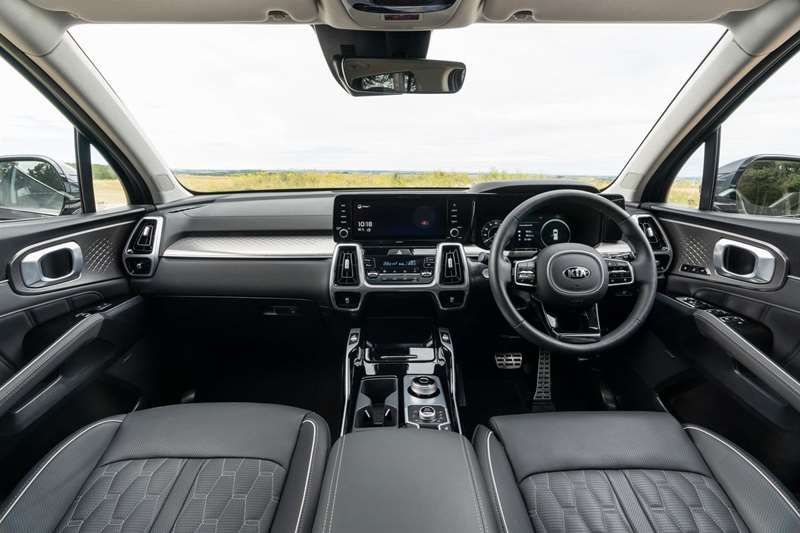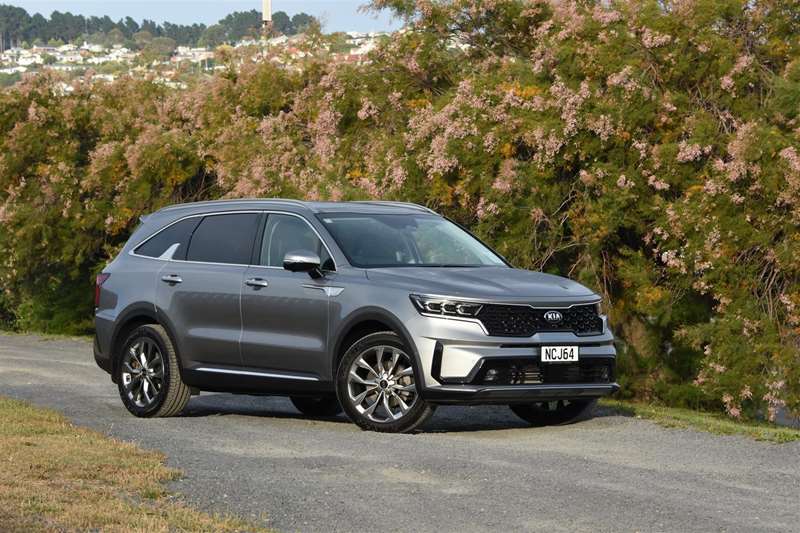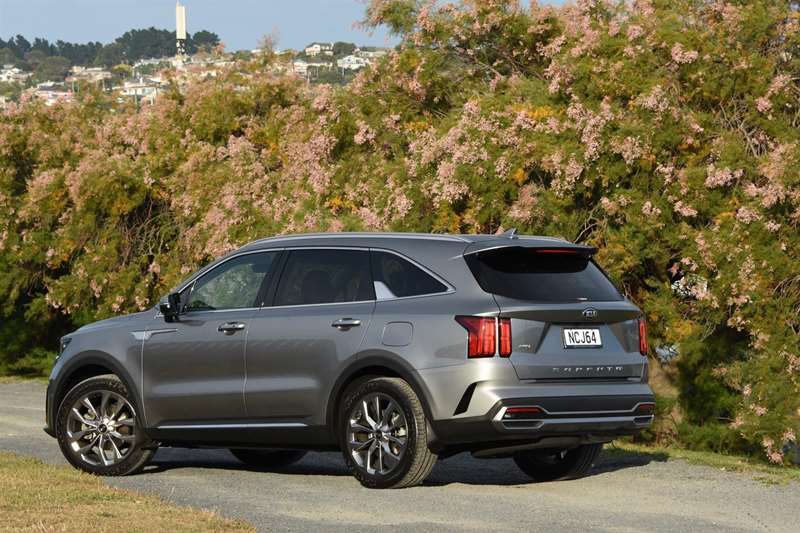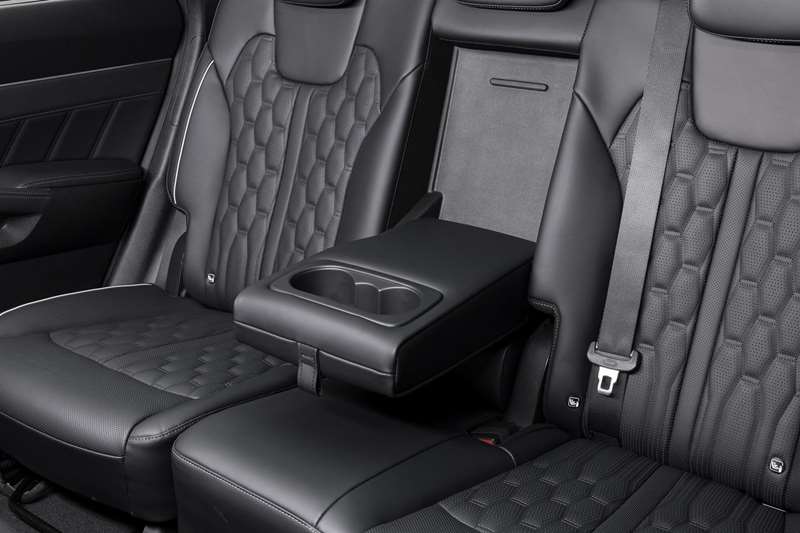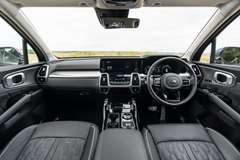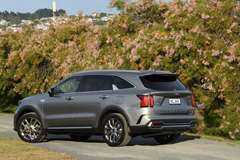Kia has high expectations for its fourth-generation Sorento. David Thomson heads out in the flagship turbo-diesel to see if they are justified.
What’s new?
Not content with breaking new ground for sales volumes in 2020, Kia is now out to make its mark at the premium end of the large SUV segment with the latest Sorento.
Boldly styled inside and out, and sitting on an all-new platform, this new machine is appreciably larger and roomier than its predecessor. It also features an array of new safety features and takes special dynamic calibrations for this part of the world under Kia’s Anzac suspension tuning programme.
There’s mechanical innovation, too, with a new turbo-diesel engine and automatic transmission, and both regular and plug-in petrol-electric hybrid models.
The turbo-diesel is a 148kW/440Nm alloy-block common-rail diesel unit, paired with a new eight-speed wet-clutch automatic transmission. This, in turn, drives an active all-wheel drive system that provides four on-road drive modes, and three further settings for use on unsealed and slippery surfaces.
Carrying a $59,990 price tag, the LX is the entry-level offering in the turbo-diesel lineup. There’s also a $63,990 EX version, a $69,990 Deluxe, and the flagship $76,990 Premium, as tested.
Sorento’s hybrid future rests with three further models, all at the Premium specification level and featuring a 1.6-litre turbo-petrol engine operating in conjunction with an electric motor. The regular (non-plug in) hybrid is a 169kW/350Nm machine, with the option of two-wheel drive ($80,990) as well as all-wheel drive ($82,990).
Featuring a 13.8kWh lithium-ion battery pack, the plug-in hybrid musters 195kW and 350Nm, and is only offered as an AWD ($89,990).
What’s it like to look at?
The latest Sorento has a tauter, more angular look than its predecessor, with its broad, bold nose and sharp creasing along the waistline particular points of distinction. Kia’s styling team was aiming for a ‘‘technical’’ look, and the new styling parallels that of Volkswagen’s new Touareg.
The new Sorento is wider, taller and higher and its predecessor, but the key dimensional change is a 35mm stretch in wheelbase. This gives the new vehicle quite different proportions, as well as paving the way for improved interior space and, thanks also to the design of the new platform on which it sits, an easy deployment of hybrid technology.
The Premium takes the maximum allocation of appearance-enhancing exterior bling, including dual LED front headlights and 20-inch alloy wheels running 255/45 tyres. The larger alloys (other modes come with smaller wheels) fill the Sorento’s wheel arches nicely, giving the Premium an especially well-planted stance.
What’s it like inside?
Spacious and stylish, the cabin is the new Sorento’s greatest achievement.
The more ‘‘technical’’ look carries over strongly into the cabin. While reflected in the choice of metallic highlighting surfaces (some patterned and illuminated), prominent angular air vents, and strongly-patterned Nappa leather seat trims, this approach finds its most substantial expression in the double-screen digital display that is fitted to all models bar the LX.
Featuring bright and clear displays with extensive customisation options, the dual-screen dominates the front of the cabin, but it is by no means the only feature that signals a brave new world for the Sorento: a conventional gear-shift lever has been replaced by a rotary knob selector, with a smaller knob aft of this to switch between the various drive and terrain modes.
The storage area forward of the gear selector includes a wireless phone charging pad and three USB plugs.
At a more fundamental level, the breadth of the front seats and the generous amount of space between them emphasises the width of the interior.
Both front seats are fully power-adjustable and fitted with both seat coolers and heaters. Light-coloured upper trim, deep windows, and a panorama sunroof ensure that plenty of light floods the cabin.
The impact of that wheelbase stretch is most obvious in the middle and rear seating rows.
Split 60:40, the middle seats adjust fore-and-aft and for back angle. There is ample legroom and sufficient width across the seats to carry three adults, though comfort is better with two and the fold-down centre armrest deployed.
Middle-row occupants are well-provisioned with creature comforts and convenience features, too, including rear seat heaters, blinds for the side
windows, and chargeable USB ports mounted on the back of the front seats as well as a further USB point and 12-volt socket at the base of the console.
The Premium provides a power-operated tailgate. There’s a separate air-conditioning system for the third-row along with a pair of chargeable USB ports, a 12-volt socket, and cup or bottle holders. Visibility from the rear seats is reasonable and the seats are comfortable, although the seating position for adults is somewhat knees-up.
For the turbo-diesel Sorento models, boot space with the third row of seats raised is 187-litres, up from 142-litres. Cargo capacity increases to 616 litres with the rear seats stowed, and a shade over 2000 litres when the middle seats are folded forward. The hybrids sacrifice a little of that carrying capacity with the relevant figures being 179L, 608L and 1996L.
What comes as standard?
Many of the standard items on the Sorento Premium are referenced above. Others items worthy of note include a 12-speaker Bose surround sound audio system and all models, aside from the LX, are equipped with satellite navigation.
There should also be strong interest in the comprehensive safety package.
The most innovative item in this package is the new blind-spot view monitor in the Deluxe and Premium models. This system is activated by the car’s indicator and projects a camera image from the appropriate side on to the digital instrument cluster.
The Sorento is also one of the first vehicles on sale in New Zealand to be fitted with an airbag that inflates between the two front seats to prevent the heads of the front occupants coming into contact in the event of a side-on collision.
Other safety features include adaptive radar cruise control, lane keeping assistance, auto-dipping lights, forward collision avoidance technology and pedestrian, cyclist and vehicle detection (now detecting oncoming traffic when making a turn at an intersection).
In the event of a crash, a new multicollision brake (MCB) system will activate to prevent the unpredictable movements of a vehicle after the initial collision. This substantially reduces the risk of secondary crashes.
Perhaps the coolest ‘‘party trick’’ is the remote smartParking assist. Activated via the key fob this allows the vehicle to move itself out of a parallel park, even when there is no driver inside the vehicle. This feature and a rear parking collision avoidance system are only provided on the Premium.
What’s it like to drive?
The Sorento turbo-diesel has sufficient pep to handle a typical mix of urban, highway and byway driving in a pleasingly responsive manner.
Acceleration through the engine’s mid-range is quite deceptive, until one remembers that the Sorento’s motor, while not the most refined diesel about, musters a solid 440Nm of torque from a mere 1750rpm. The solid thwack of torque also sets the vehicle up nicely for towing (it is rated to haul 2500kg braked) and helps in the quest for respectable economy.
I managed a 6.8L/100km return for the main portion of our test, slightly above the offical figure of 6.1L/100km.
Ride quality and body control are consistently good across a range of surfaces and the steering, while light, is accurate. These attributes, along with handling that is notably sharper than that of the previous Sorento, speak to the benefits of Kia’s ANZAC suspension tuning programme.
The terrain select system provides three specialist settings for non-tarmac driving — sand (dry sand/gravel), mud (mud/ruts) and snow (snow/slippery).
Testing the Sorento at a dry time of the year, the terrain system delivered well in its preferred settings for gravel and rutted tracks. One does need to take care on uneven off-road surfaces mind, as ground clearance is an unspectacular
176mm.
Verdict
In recent years, every new model from Kia has been a substantial improvement on the vehicle it has replaced. This fine new Sorento maintains that trajectory for New Zealand’s most upwardly mobile automotive brand.
Photos: David Thomson
